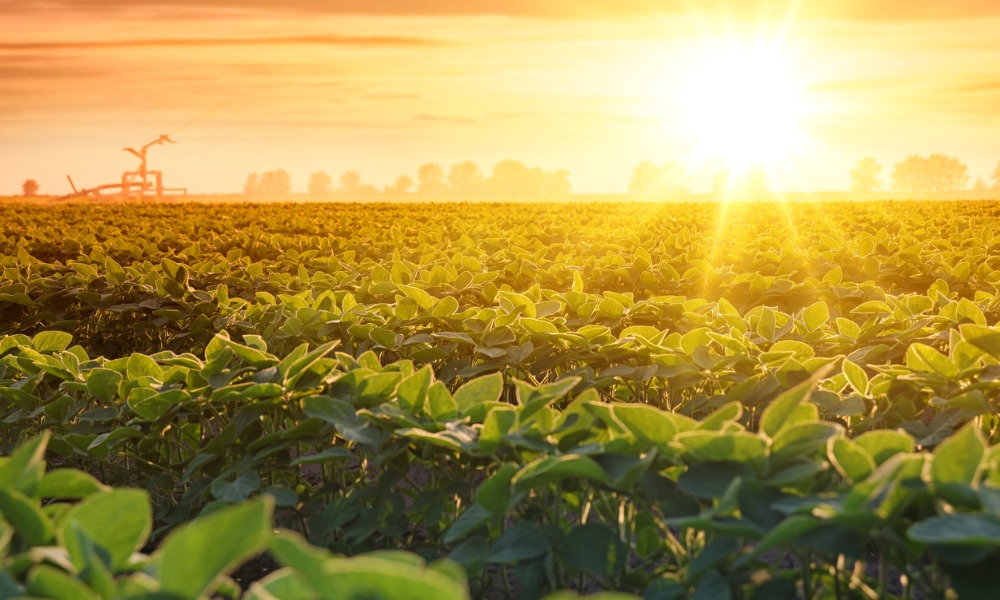Why health and safety in farming needs to adapt to a changing environment


Agriculture is a critical part of Canada's economy and food security. Yet, climate change has put farmers at high risk for health and safety. Understanding the risks of a changing planet on agricultural workers is essential to developing health and safety plans and achieving successful harvests. Here are the climate impacts Canadian farmers must contend with and how they affect the rest of the world.
Health and safety risks for agricultural workers
Those in Canada's farming industry already face several health challenges on the job. However, climate change is set to significantly increase those perils. Due to the earth's warming, agricultural workers can expect the following four health and safety risks.
- Heat Stress
Places like Vancouver and Halifax have seen much hotter temperatures in recent years, with heat waves and humidity lasting several days and weeks. In June 2021, over 600 people died as temperatures climbed in British Columbia, placing increasing pressure on Canada's health care system and driving up costs.
Farming is a laborious field requiring bodily exertion to carry out complex tasks. Spending so much time outdoors puts farmers at risk of severe heat stress, exhaustion and stroke.
- Low Air Quality
Air pollution is problematic worldwide, bearing dire health risks. In Canada, poor air quality caused 17,400 premature deaths in 2018. Acute asthmatic and respiratory days also affected the population.
Like heat stress, air pollution — including equipment exhaust, dust spores and other allergens — may trigger an adverse respiratory response in farmers. Smoke from recent wildfires also impacts outdoor particulate matter in the atmosphere.
- Pest and Disease Exposure
The combination of higher temperatures, more precipitation and excess carbon dioxide creates the perfect breeding grounds for pests and disease. The emergence of infestations significantly impacts crops and risks farmers' health.
Experts predict Canada's Lyme disease prevalence will reach 120,000-500,000 by 2050. Subsequent health care costs could range from $500 million-$2 billion annually. Heat and moisture also increase the number of viruses, parasites and bacteria, which may be harmful if agricultural workers ingest them or work with open wounds.
- Extreme Weather
Extreme weather has affected farming, from excessive rainfall and heavy winter storms to prolonged droughts. Crops underperform when the ground is saturated or too dry. Snow, wind and ice can also cause crop damage.
While crop loss is bad news for Canada's agricultural economy, these weather conditions increase farmers' risk of injury and death. Major storms may place natural debris in their way, causing them to fall and get hurt.
Canada's climate effects impact farms elsewhere
Canada is the fifth largest agricultural exporter worldwide, valuing $56 billion annually. Yet, the many storms, floods and wildfires it experienced recently have damaged the country's crops and farm equipment.
The impacts extend from farmlands to fishing waters. Canada’s seafood prep and distribution efforts amounted to $6.2 billion U.S. dollars by 2024. Upsets to the sector’s stability would have a widespread impact on the country’s economic wellness and citizens’ diets, as seafood consumption rises annually. In the Gulf of Maine, waters have warmed 99% faster than global oceans, posing a risk to lobster populations and commercial seafood.
More organizations than fisheries bear the financial and environmental side effects of this water warming. Canadian insurance companies will receive more claims as coastal businesses face floods and supply insecurity. Transportation contractors may see less work due to reduced output. Even restaurants will experience ingredient shortages, frustrating customers. On land, climate change hinders food security for all, as it seeps into nearby nations and related industries.
Winter's fluctuating temperatures — with unusual warming — made it difficult for grapes to adapt, hindering growth. Canadian wildfires are another culprit for decreased food production, with a 35% decline in wheat crops and a 14% drop in canola in 2021.
Wildfires in the north have also impacted farms in the U.S., with excessive smoke plumes slowing corn harvests in Ohio and Indiana.
Climate effects lead to resource depletion, loss of livelihoods and economy and poor mental health among agricultural workers. According to one study, 76% of Canadian farmers experience high stress. Suicidal thoughts were twice as high in the industry than in the global population.
Rising costs, less labor and widespread illnesses have contributed significantly to their low feelings. Of course, farmers in Canada and beyond endure increasing pressures to save their farms, maintain profits and meet consumer demands.
Climate change isn't slowing down, forcing agricultural workers to face a harsh reality. Building resilient farms with sustainable operations is the most effective way to boost harvests and revenue and protect their health and safety in the long term.





